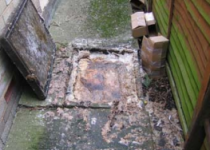Market structure, manageability, quality, and development
The market structures
An indispensable piece of the British help economy, the UK care home market for over 65s doesn’t follow an endorsed model. This is a generally divided area offering a rich and different blend of organizations, from huge corporate administrators giving more than 10,000 beds to sole brokers with a couple of homes like in blocked drains medway. Care homes worked by noble causes and other not-for-benefit associations likewise make up a huge piece of this lively market, which contains numerous constituent parts however, all in all, is an imperative social help.

Who makes the market?
The 10 biggest for-benefit suppliers make up under a fourth of the market, which is overwhelmed by free (non-public area) administrators. Around 38% of the limit is given by more modest gatherings, with the rest by administrators with a couple of homes. Care homes for more established individuals have been generally parted between those that give nursing care and those that don’t. Charges at the previous will generally be higher (a normal of £841 each week contrasted with £600 for exclusively private care) because of the NHS-supported commitment to nursing care. The market has developed naturally, importance there is no uniform model for fruitful homes, yet new-form and as of late changed over homes presently accompany en-suite showering offices and more roomy rooms. As of late, a two-level market has arisen with administrators whose pay is overwhelmingly from nearby power or NHS situations accomplishing essentially lower benefits than those whose client base is self-paying. In March 2016, simply under half (47.5%) of care home occupants had their expenses paid completely or somewhat by nearby specialists. Around one-fourth of care, homes have over 75% occupants set by neighborhood specialists. Normal charges paid by nearby specialists were 10%, not exactly the complete expense of giving care, adding up to a £200 million to £300 million shortage in subsidizing. To balance this, care homes charge self-funders around 40% more than they charge for UK gathering supported situations. Oneself compensation market is developing at a quicker rate than its state aid partner – a pattern that is supposed to proceed – with nearby authority-financed administrators progressively repositioning their care homes to cook for private clients. This leaves a political and moral gamble of the market dividing much further. The public-pay UK care home market has been affected by the inclination of neighborhood experts for charging homecare administrations (where expenses are lower as there are no convenience costs). The development of lodging with care, where occupants own or lease the property and care is given at an extra expense, is likewise rivalling care homes for clients yet this area is a long way from arriving at development. Accordingly, care home administrators have moved further up the sharpness chain, for instance, obliging individuals with extreme dementia.
The case for speculation
The segment case for interest in the UK old private care area is very much practised. The UK populace of those matured 85+ is projected to increment from 1.6 million out in 2016 to 2.8 million by 2031, an increment of c.75%. This maturing populace will expect admittance to mind administrations, including private care. The projections are obvious and highlight a prerequisite for critical extra older private limits in the UK. In any case, albeit the development rate in the 85+ populace is conjectured to advance rapidly throughout the following 10 years, this is not another peculiarity. There has been an increment of over 45% (or 500,000 people) in the 85+ populace starting around 2001.



